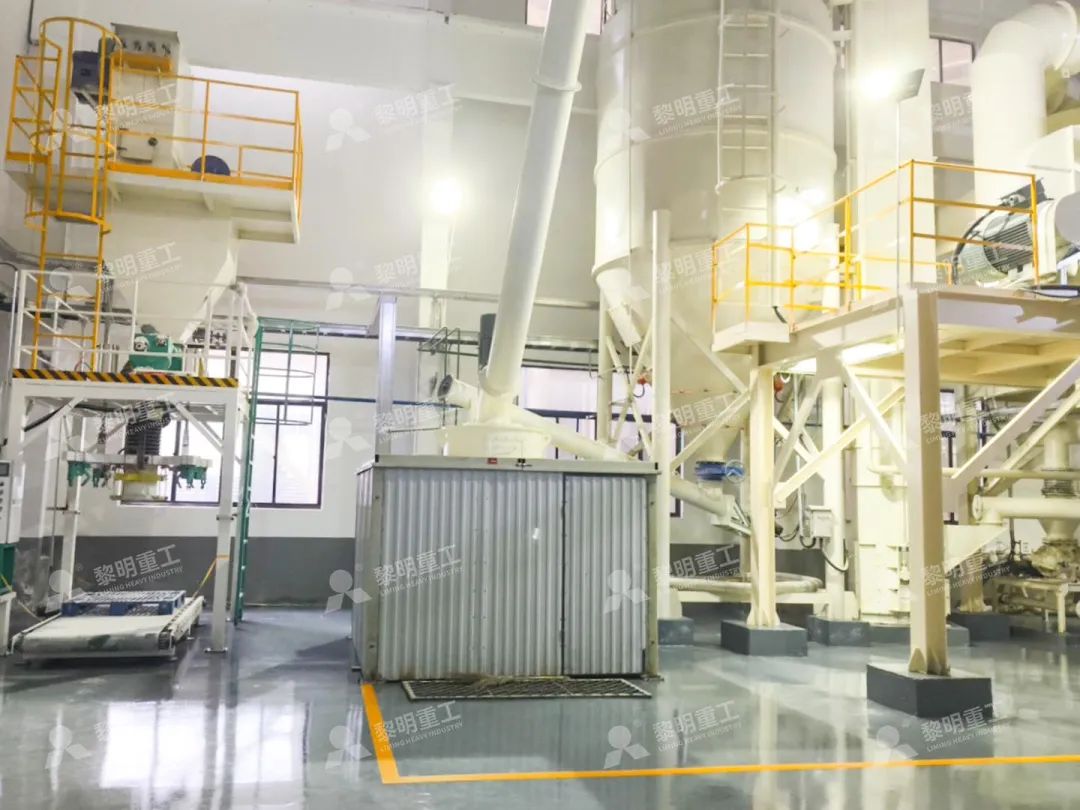Working Principle of Expandable Graphite Grinding Mill
Working Principle of Expandable Graphite Grinding Mill
Expandable graphite, a specialized form of graphite with the unique property of expanding when heated, requires precise grinding technology to achieve the desired particle size distribution without compromising its thermal expansion characteristics. The grinding process for this material demands equipment capable of handling its flaky structure while maintaining product integrity.

Fundamental Grinding Mechanism
The grinding of expandable graphite begins with proper material preparation. Raw expandable graphite with an input size ranging from 0-20mm enters the grinding chamber where multiple forces interact to reduce particle size. Unlike conventional materials, expandable graphite requires gentle yet efficient grinding to preserve its intercalation compounds that enable expansion.
In the grinding chamber, the material undergoes a multi-stage reduction process. The initial breaking of larger flakes occurs through impact forces, followed by shearing and attrition between grinding elements. The unique layered structure of graphite makes it susceptible to delamination rather than fracture, which actually benefits the grinding process when properly controlled.
Advanced Grinding Technology for Specialized Applications
For processing expandable graphite into ultra-fine powders, specialized equipment is essential. The MW Ultrafine Grinding Mill represents an ideal solution with its advanced engineering specifically designed for challenging materials. This machine handles input sizes of 0-20 mm with production capacities ranging from 0.5 to 25 tons per hour, making it suitable for various production scales.
The MW Ultrafine Grinding Mill operates on an innovative principle where the motor drives the main shaft and turnplates through a reducer. This assembly drives multiple rollers to rotate against the raceway of the grinding ring. Material fed into the central part of the upper turnplate falls downward under centrifugal force, entering the raceway where it’s crushed into powder. The absence of rolling bearings and screws in the grinding chamber eliminates common failure points and ensures continuous operation.

Particle Size Control and Separation
After initial grinding in the first raceway, material progresses to secondary and tertiary turnplates for further refinement. The integrated blower system introduces external air into the mill, carrying the finely ground powder to the separator. The turbine within the separator employs precision German technology to separate coarse particles for regrinding while allowing fine powder to proceed to collection.
The cage-type powder selector in the MW Ultrafine Grinding Mill offers exceptional control over final product fineness, adjustable between 325-2500 meshes. This precision is crucial for expandable graphite applications where particle size directly influences expansion volume and performance characteristics. The system achieves a remarkable screening rate of d97≤5μm in a single pass.
Environmental and Operational Considerations
Expandable graphite processing demands attention to dust control and operational safety. The integrated pulse dust collector and muffler system in modern grinding mills effectively contains graphite particles and reduces noise pollution. The fully enclosed system operates under negative pressure, preventing material escape and ensuring workplace safety.
For operations requiring vertical grinding configuration, the LUM Ultrafine Vertical Grinding Mill presents another excellent option. With its input size of 0-10 mm and capacity of 5-18 tph, this mill incorporates the latest grinding roller technology and German powder separating technology. Its reversible structure simplifies maintenance while electronic and mechanical limiting technologies ensure operational stability.

Material-Specific Processing Advantages
The grinding of expandable graphite benefits from several technological advancements in modern milling equipment. Higher yielding rates with lower energy consumption – up to 40% higher production capacity compared to jet grinding mills – make the process economically viable. The external lubrication system allows for continuous 24-hour operation without shutdowns for maintenance.
Digitalized processing ensures consistent product quality through precise control of grinding parameters. Numerical control of cutting, bending, planing, milling, and painting operations guarantees high machining precision, particularly for core components that directly influence grinding efficiency and product quality.
Frequently Asked Questions
What makes expandable graphite different from regular graphite in terms of grinding?
Expandable graphite contains intercalation compounds between its layers that enable expansion when heated. This requires gentle grinding that preserves these compounds while achieving desired particle size. The layered structure also means it responds better to shearing forces than impact crushing.
Why is the MW Ultrafine Grinding Mill particularly suitable for expandable graphite?
The MW Mill’s unique design without rolling bearings and screws in the grinding chamber eliminates contamination risks and maintenance issues. Its adjustable fineness between 325-2500 meshes and efficient powder separation system provide precise control over final product characteristics essential for expandable graphite applications.
How does the grinding process affect the expansion properties of graphite?
Proper grinding maintains the integrity of the intercalation compounds while creating particles of optimal size for expansion. Over-grinding can damage the layered structure, while under-grinding may result in inconsistent expansion. The controlled grinding in modern mills preserves these critical properties.
What capacity range is available for expandable graphite grinding systems?
Our MW Ultrafine Grinding Mill offers capacities from 0.5 to 25 tph, accommodating both pilot-scale testing and full production requirements. This range allows customers to scale operations according to market demands while maintaining product consistency.
How does the environmental control system work in graphite grinding operations?
The integrated pulse dust collector creates a closed system that operates under negative pressure, preventing graphite particle escape. Combined with silencers and noise elimination rooms, the system ensures compliance with environmental standards while protecting operator health.
